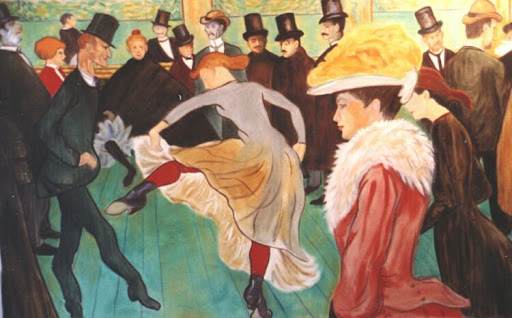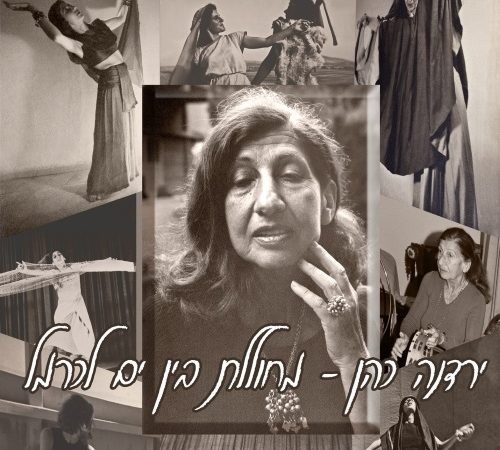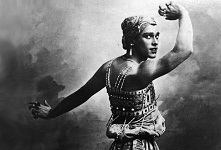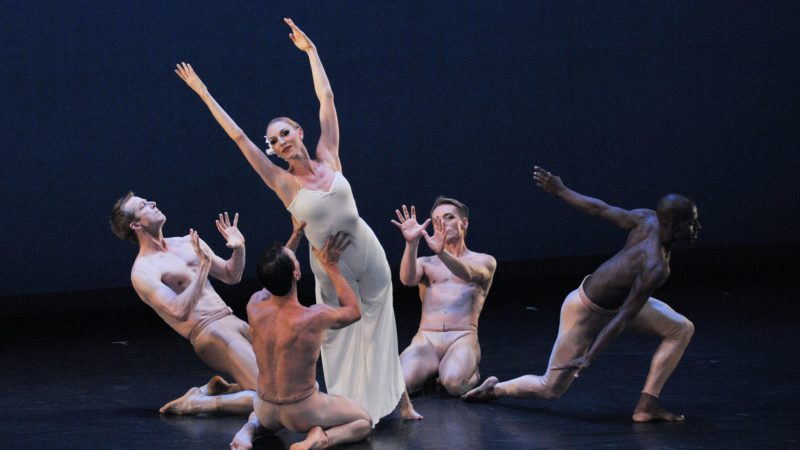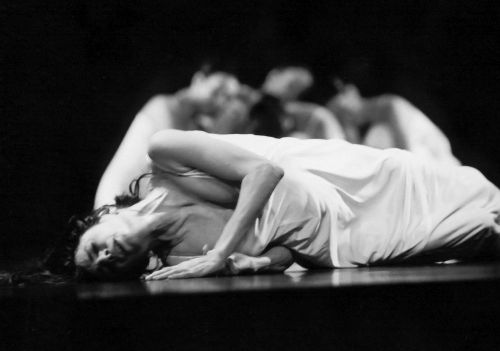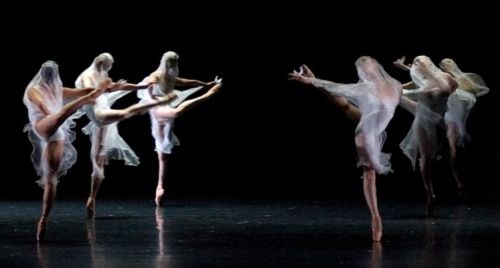A Retrospective of Mallorquin Dance
This article is drawn from my ethnographic research on Mallorquin dance on the Spanish Balearic Island of Mallorca, between 2003 and 2007. The Mallorquin dance repertoires have developed in two parallel lines following the establishment of the organisation Fomento del Turismo de Mallorca (Promotion of Tourism) in 1905: for tourists as presentational choreographed dances, and for locals as participatory improvised dances in social contexts. The Sección Femenina (Women’s Division of the Falange Party) controlled dance throughout Spain and Mallorca between 1939 and 1975, when only choreographed dances were performed. These dances were devised for the national folkloric dance competitions of Spain.
Dance scholars divide dance in the second half of the twentieth century into two radically different periods in Spain (Mones, Carrasco et al., 2000, pp.145-146). The first period began at the end of the Spanish Civil War in 1939 and remained until the 1950s. The second period began with the restoration of democracy in 1977 (ibid). The main shift between these two periods was from a centralised aesthetic to one of creating a new Estados de la Autonomias (Statute of Autonomy) and an aesthetic that highlighted local regional differences. I consider, however, that in Mallorca there are three divisions that separate the periods of dance in the twentieth century.
The first period of dance in Mallorca arose before the Spanish Civil War, at the beginning of the twentieth century leading up to 1936. Dance was then in the domain of the people in the villages and a few local folkloric dance groups that had formed to perform tourists. The dances originating from this period at the beginning of the twentieth century are the basis of what Bartomeu Enseñat-Estrany constructed his revival of dance on, at the end of the 1970s and beginning of the 1980s. He was the founder and director of the Escola de Música i Danses de Mallorca in Palma, where one of my fieldwork sites was based.
The second period is from 1939-1975 when the Sección Femenina was in control of dance. During this period, the transmission of dance was exclusive to the folk dance groups and to women, and there were no mixed gender performances until the 1960s. Men were not allowed to dance unless they were performing the liturgical dances for the Catholic Church. The restraints on dance implemented by the Sección Femenina lessened as mass tourism began in the 1960s.
The third period began with the restoration of democracy in 1977. Bartomeu Enseñat who was a revivalist and folklorist was born in 1917, and died in Palma in 1999. From his interviewees' accounts of dance, he revived the jotas, boleros, fandangos, matexias, and the bullanguera, which is a dance derived from the jota. These traditional folk dances are known in Mallorca by their vernacular name of ball de bot (a type of jumping dance), and are further categorised as baile popular (popular dance).[1] The heritage of improvised dances that Enseñat created is now the main form of dancing throughout the island.

Photo No.1- Dance students at the Escola de Música i Danses
The Agrupaciones (Folk Dance Groups)
Mallorquin dance in the 1920s developed as a response to the newly established tourist industry. The agrupaciones were formed to enable dancers in a predominantly agricultural society at that time, to earn money by performing for tourists. Antonio Mulet (1956, p.71) considers that the first agrupacion to be formed in Mallorca was Parado de Valldemossa (stop of Valldemossa) in 1924, in the north west of the island, in the village of Valldemossa. Parado de Valldemossa and a few other groups were formed prior to the Spanish Civil War of 1936-1939, and before the establishment of the Sección Femenina.
During the 1930s and 40s, Mallorquin dance developed along parallel lines with performances staged specifically for tourists, while other dance events were devised for the local population. The Mallorquin dances had their historical roots within the towns and villages and local families. The economic depression of the world in the 1930s, and increasing fascism of Italy, and Nazi Germany did not help the political turmoil of Spain, which culminated in the Spanish Civil War. The war was fought between the Second Republic and nationalists, and resulted in a nationalist victory for General Francisco Franco and the Falange party, who founded a dictatorship of Spain.[2] Dance from the beginning of Franco's dictatorship in 1939, until his death in 1975 was under the control of the Sección Femenina.
The Sección Femenina 1939-1975
Dance historian, Estrella Casero-Garcia (1999, p.79) states that José Antonio Primo de Rivera founded the Falange in 1933, while his sister Pilar Primo de Rivera acted as "the National Delegate for the Feminine Division until it was abolished on the 1st April 1977".[3] The Feminine Division was divided into councils: the Regiduria de Cultura (Cultural Council) and the Departamento de Música (Music Department). The Coros y Danzas (Choral and Dance) was part of the Music Council. Casero-Garcia (p.79) suggests that, "the Feminine Division functioned as a specialized agent in the indoctrination of women during the entire Franco period". She (p.80) argues that the ‘instructors' from the Feminine Division were entrusted with music, displays of folklore, including dance and were also indoctrinated in politics. Casero-Garcia (p.82) further argues how the Franco Regime through the Coros y Danzas, used women for propaganda purposes to ‘reduce the cultural diversity of the country'. Restrictions were imposed on men who were stopped from dancing, and improvised dancing was suppressed. The Feminine Division became involved in programmes related to the preservation of tradition, and ultimately controlled the Coros y Danzas for over forty years. The Sección Femenina left an indelible mark on the development of dance in Spain through its organisation of 24,000 members and 1,600 groups (Mones, Carrasco et al. 2000, p.152).
Maria del Pilar Castor Binimelis and Margalida Rosselló Riera (2002, p.75) also discuss how the Sección Femenina was the instrument for women's political and social education.[4] They (p.76) suggest that the headquarters of the Sección Femenina in Mallorca was based in Manacor between 1936 and 1977. The archives in Manacor do not contain any data about the Sección Femenina, because in 1977 one of the members of the masculine youth section burned the documents for fear of eventual retaliation (ibid). Only a few documents about the Auxilio Social (social services) in which the Sección Femenina collaborated were saved from burning (ibid). The fear that the Mallorcan people felt towards the Falange Party was because of the restrictions imposed by them on political, social, and cultural activities. While carrying out fieldwork in Mallorca, I was told many times that the Mallorcan people were constantly exposed to being spied upon, and denounced by supporters of the Falange Party. There is still a deep fear of the exposure that denouncement can impose.
The origins of the Sección Femenina in Manacor owe much to the influence of an educated political activist, and feminist, Margalida Alcover Llull. Margalida was born in 1899 to a wealthy Catholic family and belonged to the union for women's rights. She was a gifted orator with great influence and joined the Falange party to defend the nationalist and Catholic convictions of her country (p.77). In 1936, Margalida was made the local director of the first branch that the Sección Femenina created in the Balearics, and continued in this position for twenty-five years (p.78). Pilar Castor Binimelis and Rossello Riera (p.84) state that there were between one hundred and two hundred members of the organisation in Mallorca. Of these members, Margalida Ferrer Caldentey was the dance and music instructor assisted by two dancers (p.85).
Through the Coros y Danzas, the dance groups took part in festivals and competitions to raise money for charitable purposes, and to preserve the traditions of Spain, including Mallorquin dances.
"The agrupaciones tended to create new music, new varieties, new dances including large choreographies and at the end, the original dances lost their appearance, some too ceremonious, others with accelerated rhythms in order to make it more spectacular."
Bernat, 1993, p.10
Josefina Roma (2005, p.142) considers that the first competitions of the jota were held as early as the nineteenth century. She argues that the folk dance groups in Spain corrupted the local traditional jotas by adding parts of other real or imagined dances (ibid). The new jota would be named after the local village from where it was performed (ibid), which is comparable to the naming of dances in Mallorca. Roma considers that in 1940, Franco's government sought to stress national identity and established the school of the Aragonese jota in a building adjoining Zaragoza's town hall (ibid). Candi de Alaiza (1987, p.36) also argues that since the 1940s, the jota evolved as a competitive form, and was preserved particularly by the Basque people.[5]
The jotas of the Sección Femenina were choreographed with groups of six or more people dancing in circles, and are intersected by patterns of line formations of the dancers. The speed of the music is also more varied to incorporate slow sets and fast sets of movements. The traditional Spanish dances created by the Sección Femenina were often new choreographies, and are not considered indigenous to Mallorquin dance. Antonio Biblioni, a director of a cultural group in Alcudia, Mallorca, considers that a majority of Mallorquin dances were lost during this period. He states that there were positive and negative points of their legacy.
"A positive point was that dance was maintained, but the negative aspect was that it was a very adulterated and diluted form. Dance always used to be performed between couples with free steps and movements. In the Sección Femenina, one group used to make big circles, and jump through hoops with Franco's banderas (flags), because they supported his ideology."
Antonio Biblioni, Recorded Interview, Alcudia, 23rd February 2004
Mulet (1956, p.90) suggests that in Mallorca during the 1940s, the folkloric dance group, Aires del Pont d'Inca was founded in 1944, and Aromes de Nostra Terra (flavours of our land) in 1947, both of which no longer exist. Mulet does not mention if these groups were members of the Sección Femenina, but it seems probable. In October 1949, Pilar Castor and Rosselló Riera (2000, p.91) suggest that the Flechas (girls under fourteen years of age) in Mallorca won the national dancing contest of the Sección Femenina in Madrid. As a result of this, the national deputy, Pilar Primo de Rivera gave the Coros y Danzas their own premises in Manacor to carry on with their activities (ibid).
Casero-Garcia (1995, p.257) considers that it was in 1946, however, when the United Nations morally condemned Spain and imposed an embargo that the Coros y Danzas made their first overseas visit to Argentina, the only country that aided Franco. By 1955 with an increase in domestic tourism, the Sección Femenina had decreased in size, and ad-hoc folkloric groups began to perform shows for tourists. Licensing was introduced towards the end of the 1950s, which meant that dancers performing for tourists had to obtain an official document in order to dance.
There were several other groups in the 1950s, including Aires Regionales de Galilea, Aires Mallorquines del Pont d'Inca, and Parado de Andraitx (Mulet, 1956, pp.94-97). Two folk dance groups, Dansadors de la Vall d'Or and Brot de Taronger later became the foundations for the schools where I carried out research in Palma and Soller. Aires Sollerics in Soller is a continuation of Nadal's group, Brot de Taronger. Guillem Bernat, the director of Aires Sollerics (1993, p.4) recalls being taken by his father to assist at a rehearsal of his elder brother and sister with Brot de Taronger in the early 1960s.
Men were eventually allowed to join the groups in Mallorca between the 1950s-1960s, which is evident through Enseñat and Nadal's formation of these two schools in Soller, albeit that these two men were influential figures in the community. This particular change in allowing men to join the folkloric groups was a gradual process over the years, and influenced by an increase in tourism throughout the Spanish regions. Casero-Garcia (1995, p. 256) for example, argues that in the Spanish peninsula, the men and boys were discriminated against by being "expressly prohibited from belonging to the groups".
"They could only be used to play the musical instruments accompanying the dancers. It was not until 1961 that men and boys were included in the Choral and Dance groups as dancers. Up to that point the dances had been misrepresented because the majority of Spanish folk dances involve couples, and two women were performing them. Either both women would dress alike or one would dress as a man."
Casero-Garcia, 1995, p.256
Although Bernat cannot remember exactly when Brot de Taronger ended, he considers it was around the middle of the 1960s. Bernat states that during the gap between Brot de Taronger ending and Aires Sollerics beginning, he and other dancers from Soller formed ad-hoc groups to perform for the tourists (personal communication, October, 2008).
"I had to go to Palma to the syndicato to be examined. I needed a card to dance at night on stage for tourists. At the fiestas, cards were not needed, but we were always watched by the police. The ‘syndicato vertical' was the trade union of dance and it also monitored the circus. The licensing stopped in the 1970s after Franco's demise, and the name of this department is now known as the 'Commisario de Obras'."
Guillem Bernat, Recorded Interview, Soller, 18th February 2004
Dansadors ended in 1965 and after a ten-year gap, Enseñat moved to Palma. Through the help of influential friends, such as the Mayor of Palma, Enseñat established a new folk dance group and school in Palma in 1975, known as the Escola de Música i Danses de Bartomeu Enseñat Estrany (now known as the Escola de Música i Danses de Mallorca). The significance of the origins of Dansadors de la Vall d'Or is that this group became the foundations upon which the Escola de Musica i Danses de Mallorca was created.
The death of Franco in 1975 opened up the way for the transition to democracy with the first general elections held in 1977. The negotiations that took place then were between both political elites of the Francoist and Democrat parties to establish a new democracy (Grugel and Rees, 1997, p.83). After 1978, the Balearic islanders gradually worked towards establishing autonomous status within the region in 1983. Specific challenges came to the fore in the transition towards democracy, and regionalism was a central concern of this process.
The revival of dance that took place in Mallorca in the 1980s showed that there was a move by most of the Mallorcan community to disassociate themselves from the repertoire of the Sección Femenina, and the fascism associated with them. In contrast, Bernat of Aires Sollerics has reconstructed a few dances from the repertoire of the Sección Fememina, which are now performed in the school's stage presentations. Bernat considers that the jotas they perform from the repertoire of the Sección Femenina are not exactly the same, but they still have a similar complicated floor pattern. He explained that he had "cleaned up the jotas espectacular" of the Sección Femenina by eliminating their extensive use of props, and also by modifying their floor patterns.

Photo No.2 – Dancers from Aires Sollerics performing the jota
From the end of the 1970s up to the mid 1980s, a number of new initiatives took place. L'Escola de ball de Bunyola founded the Federació de Música i Ball Mallorqui (Federation of music and dance), which was createdto research the traditions and culture of Mallorca by participating in discussions at conferences and fiestas. In 2008, the Federation had around thirty-nine groups as members, which includes the xeremiers (bagpipe) groups and a few cultural groups.
A major change in performance contexts of dance took place in the 1980s, when the dances were revived as an improvised dance style, specifically for the local community in social contexts, away from the tourist domain. From this moment a more innovative approach was implemented by Enseñat to modernise the dances, while musicians from his school left to start a process of modernising the traditional music when playing in social contexts of dance. There are now around a hundred folk dance groups and cultural groups on the island.
Bibliography
Bernat, G., 1993. El Ball Popular Als Segles XIX I XX. A Les Aules de Cultura Popular de Manacor. Manacor, Mallorca: Departament de Cultura Manacor.
Casero-Garcia, E.,
– 1995. Gender, Motherland and Dance. Border Crossings: Dance and Boundaries in Society, Politics, Gender, Education and Technology. Ryerson Polytechnic University, Toronto, Ontario. Canada. 10-14 May, Society of Dance History Scholars, University of California, Riverside.
– 1999. Women, Fascism and Dance in the Coros Y Danzas of the Feminine Division Under the Franco Regime (1937-1977). 22nd Annual Conference: Society of Dance History Scholars Proceedings. University of New Mexico, Albuquerque, New Mexico. 10-13 June. S.D.H.S.
De Alaiza, C., 1987. The Evolution of the Basque Jota as a Competitive Form. In (eds) Wallen, L. and Acocella, J. A Spectrum of World Dance: Tradition, Transition and Innovation. Cord Dance Research Annual. No. XVI: 37-51.
Del Pilar Castor Binimelis, M. and Rossello Riera, M., 2002. La "Seccion Femenina" a Manacor: (1936 – 1977): Margalida Alcover Llull. Manacor, Mallorca: Department de Cultura Manacor.
Galmes, A., 1952. Bailes Populares Mallorquines. Panorama Balear. Palma, Monografias de Arte, Vida, Literatura Y Paisaje. Vol. 1, pp.1-20.
Grugel, J. and Rees, T., 1997. After Franco: The Transition to Democracy and the Legacy of Francoism. In McMillan, J.F. (ed). Franco's Spain. London: Arnold.
Mones, N., Carrasco, M., and Casero-Garcia, E., 2000. Between Tradition and Innovation: Two Ways of Understanding the History of Dance in Spain. In Grau, A, and Jordan, S. (eds). Europe Dancing: Perspectives on Theatre Dance and Cultural Identity. London: Routledge.
Mulet, A., 1956. El Baile Popular en Mallorca. Palma, Mallorca: Mossèn Alcover.
Roma, J., 2005. The Aragonese Jota: The Building of an Emblem. Dance and Society: Dancer as Cultural Performer: 40th Anniversary of Study Group on Ethnochoreology of International Council on Traditional Music. Szeged, Hungary, 2002. Akademiai Kiado, European Folklore Institute, Budapest.
Thomas, H., 2003 [1961]. The Spanish Civil War. (4th edition) London: Penguin Books.
Notes
[1] See Antonio Galmes' (1952) discussion of baile popular in Bailes Populares Mallorquines, in Panorama Balear.
[2] The Second Republic governed Spain from 1931-1936.
[3] Jose Primo de Rivera was the son of Miguel Primo de Rivera, who had died in 1931. Hugh Thomas (2003, p.485) considers that José Antonio Primo de Rivera was later shot in 1936 in an Alicante goal.
[4] Del Pilar Castor Binimelis and Rossello Riera (2002, p.76) state that the Kingdom of Mallorca archives contain the annual minutes of the provincial branch of the Sección Femenina, listingthe activities that were carried out by them.
[5] Del Pilar Castor Binimelis and Rosselló Riera's (2002) documentation lists some of the competitions and international tours that the Sección Femenina organised.
